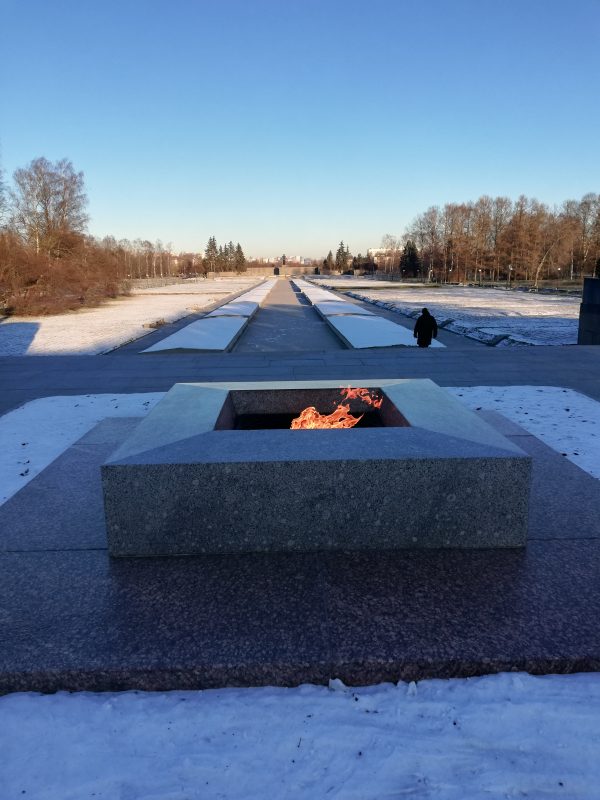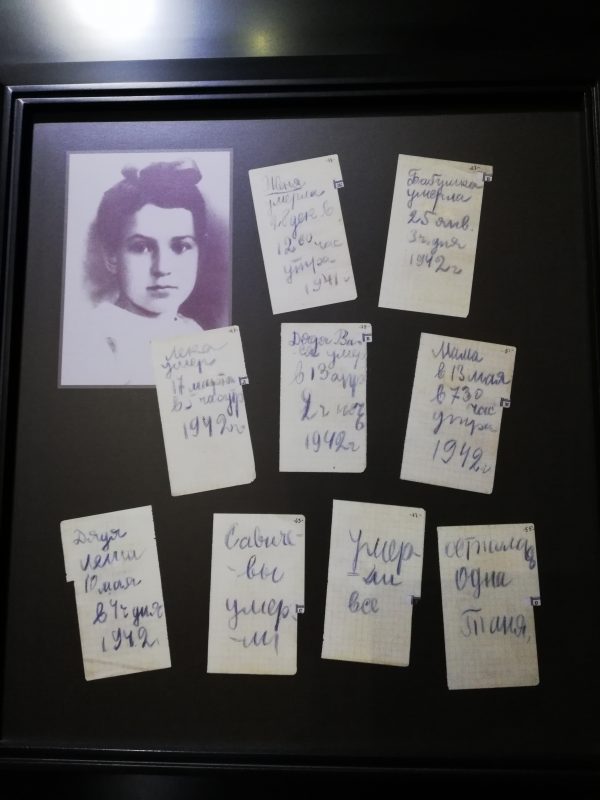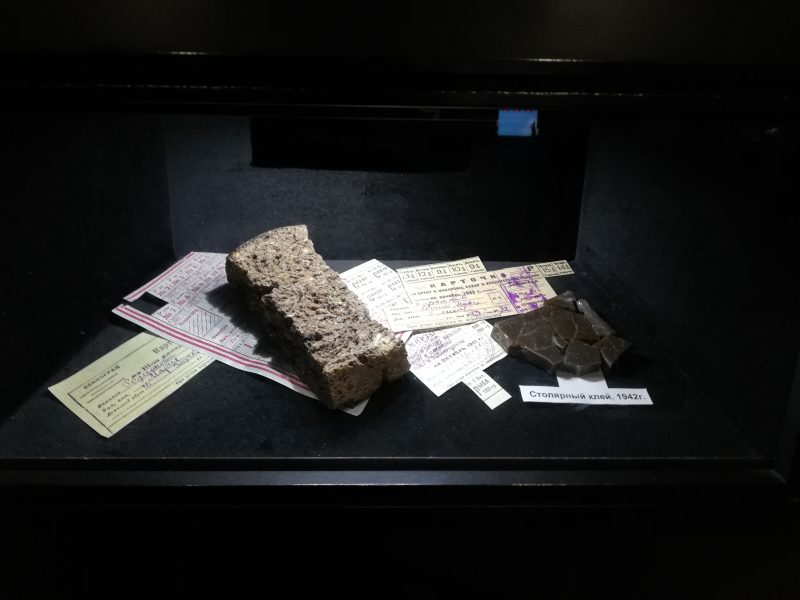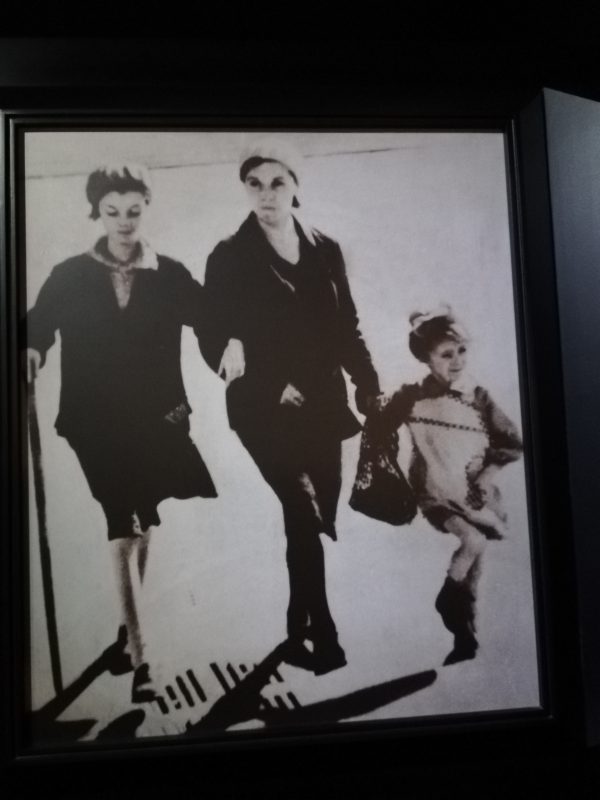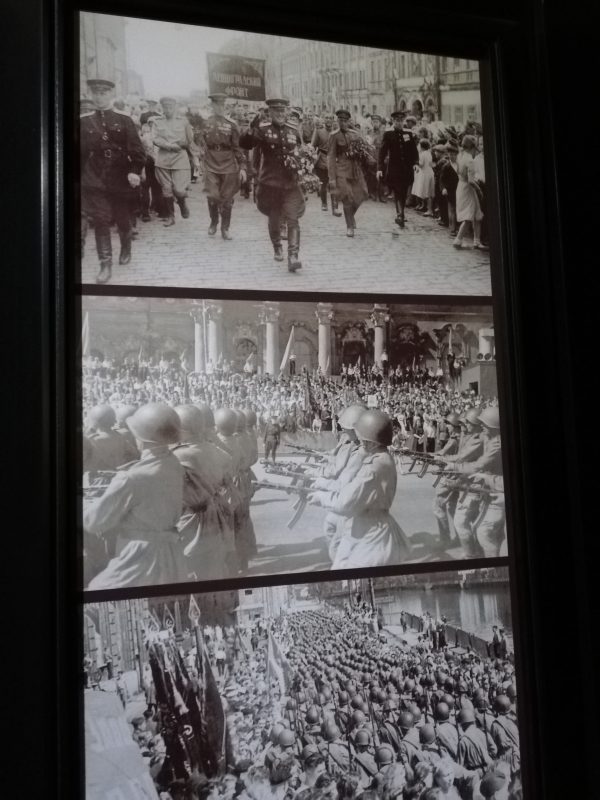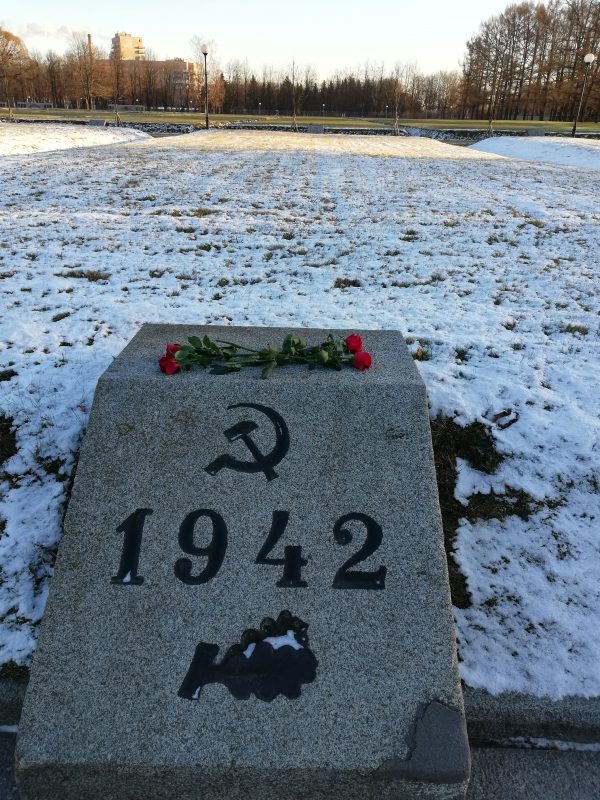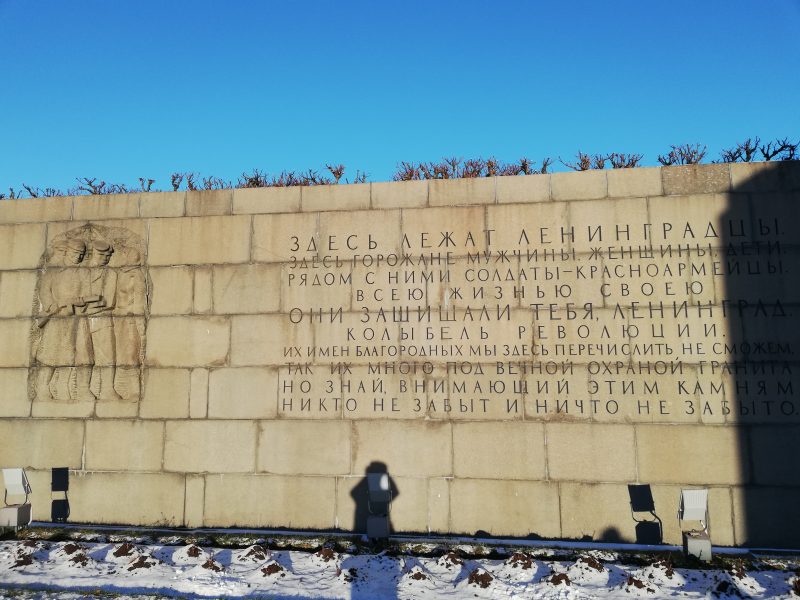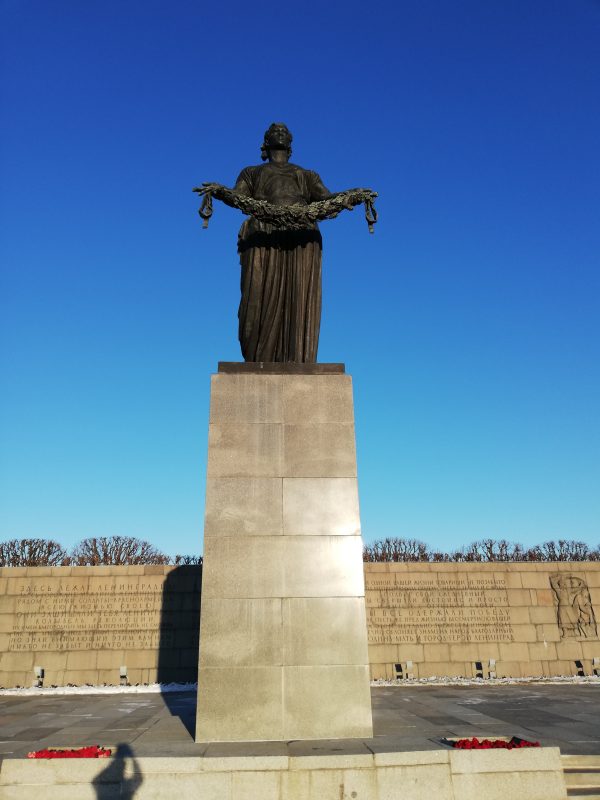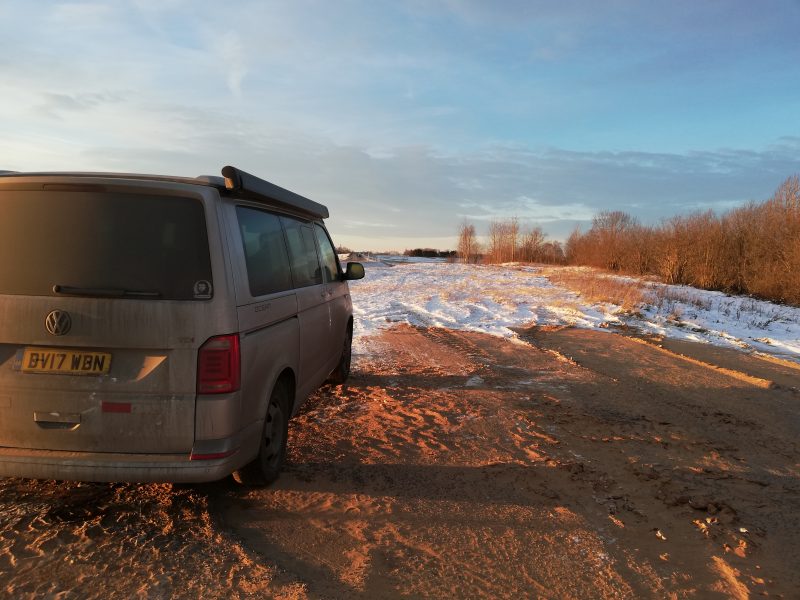In the morning of the 29th, we visited the Piskarevskoye Kladbishche, a mass cemetary where about half of the 1.6 million victims of the siege are buried in hundreds of mass graves. I last went in 1985, when it was thronged with people, many carrying flowers, many crying, and a number of wedding parties of people who had lost parents or grandparents in the siege and felt that somehow they were allowing their dead relatives to participate in the ceremony. This time it was practically deserted apart from a handful of people carrying carnations. The museum located at the entrance was heartrending with pics of starving people, an example of the daily ration of 125 grams of “bread” which was 60% sawdust and the diary of Tanya Savicheva where she recorded the deaths of her entire family. The last two entries say “All dead” and “Only me now”. We walked to the end to look at the statue and the granite wall with the poem by Olga Bergolts, a poet who chose to stay in the city during the 900-day siege. Couldn’t stop my voice breaking as I translated it for Jennifer.
We then spent a couple of hours looking for the Yusupov Palace where Rasputin was murdered. Count Yusupov managed to get away during the revolution despite being weighed down by all the precious jewels sewn into his clothing. We didnt find it, but you need at least a fortnight to see every beautiful thing in Leningrad and we will be back sometime.
We then drove to the Russian border with Estonia and, apart from a slight hitch when the lady at the customs control office couldn’t understand my customs declaration which was issued in Kyrgyzstan (many former Soviet countries have a customs union), we got into Estonia in record time. Getting into and out of Russia was a very easy experience. We spent the 30th driving through Estonia but got to Tallinn too late to see anything so decided to carry on towards Latvia and, after crossing the border, found a large lorry park and spent the night ensconced between two huge trucks.
